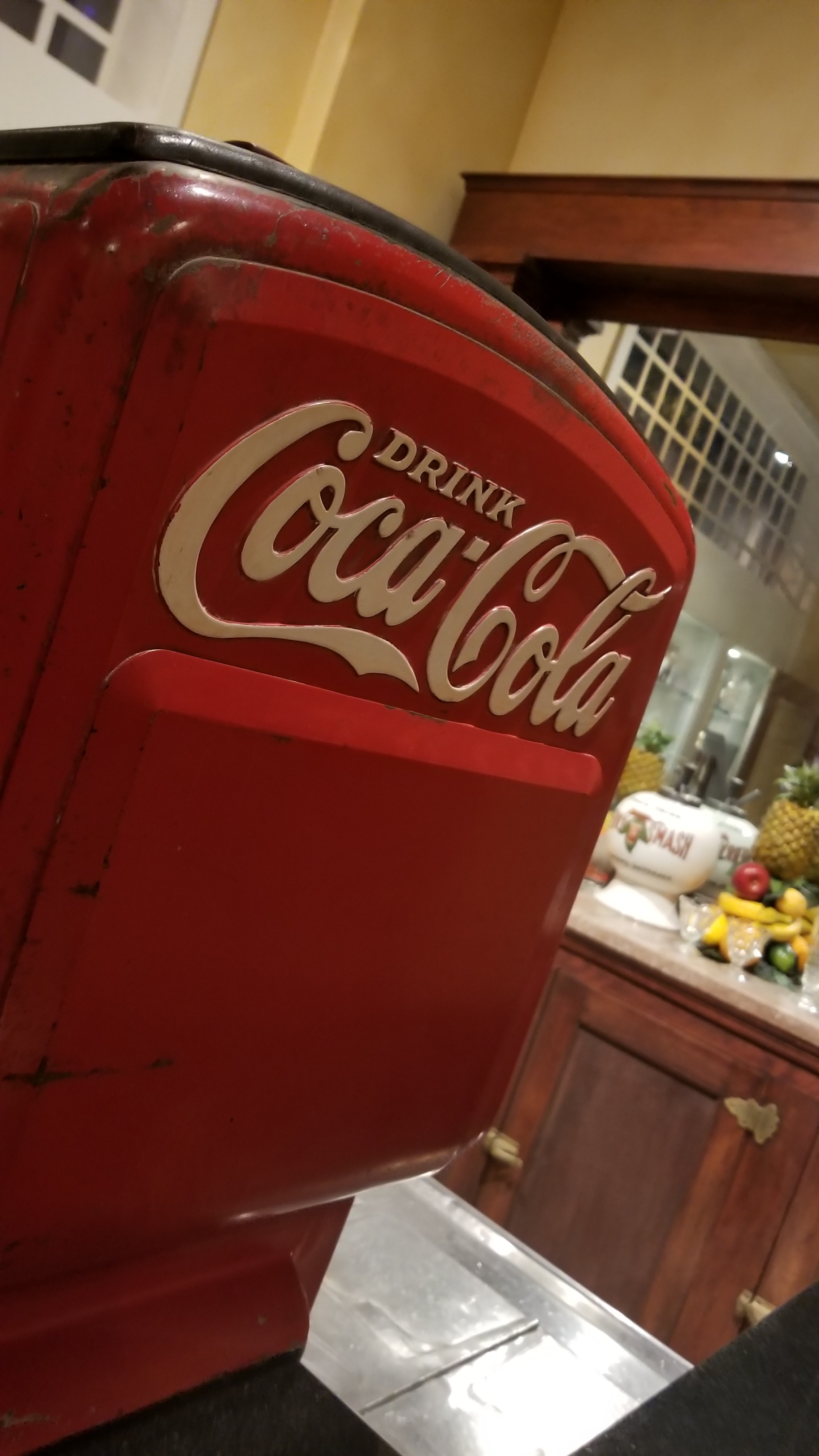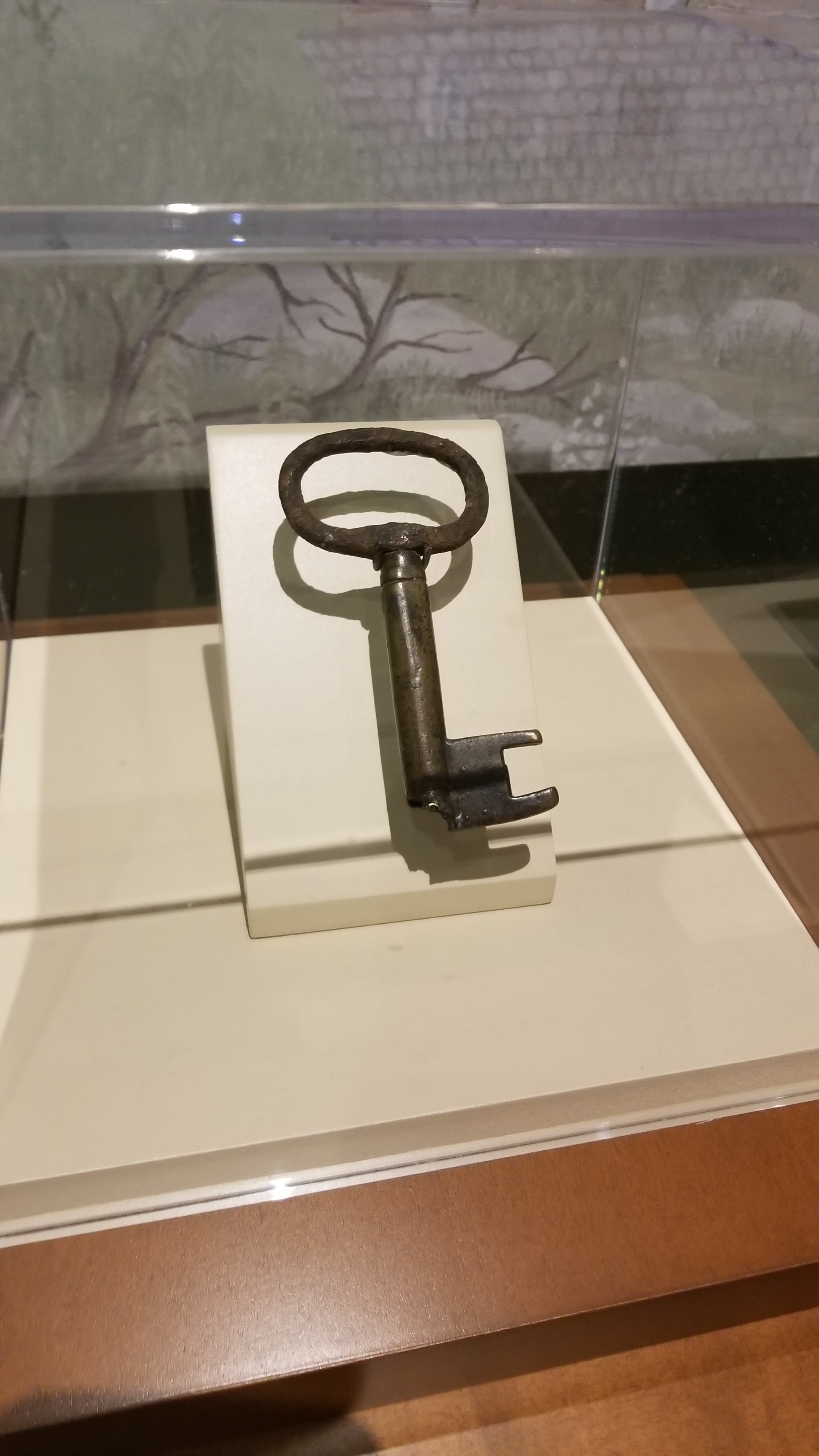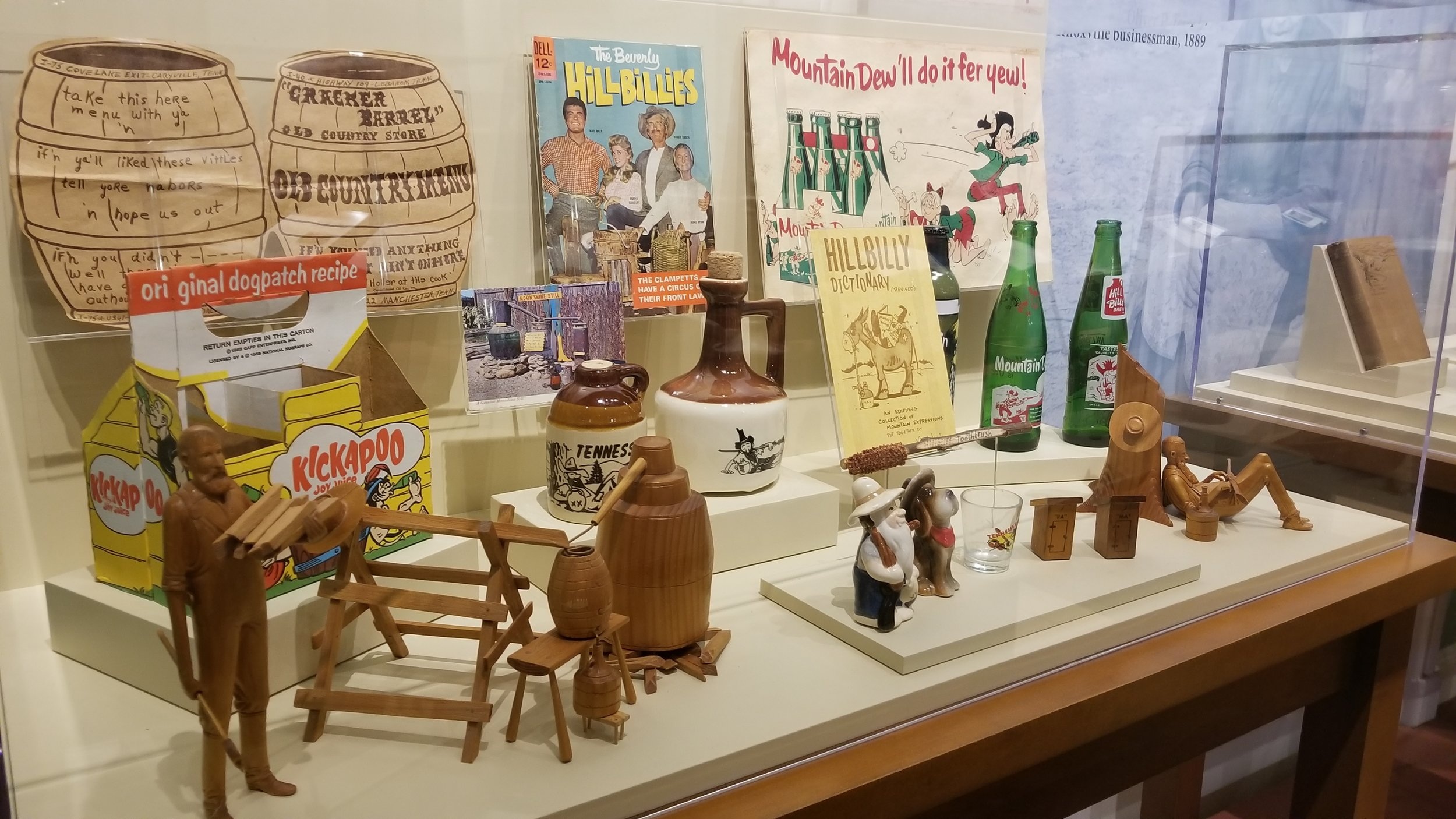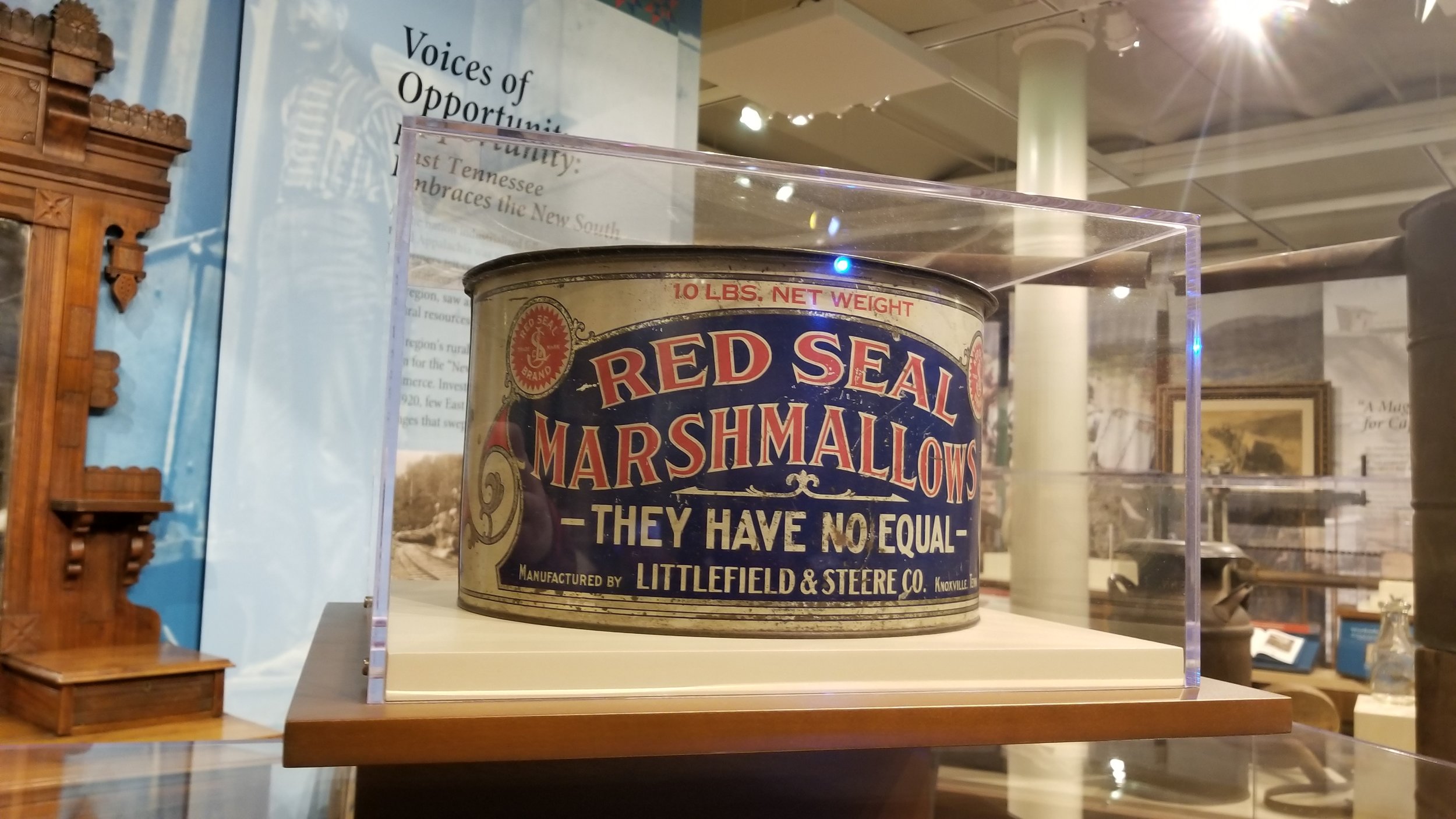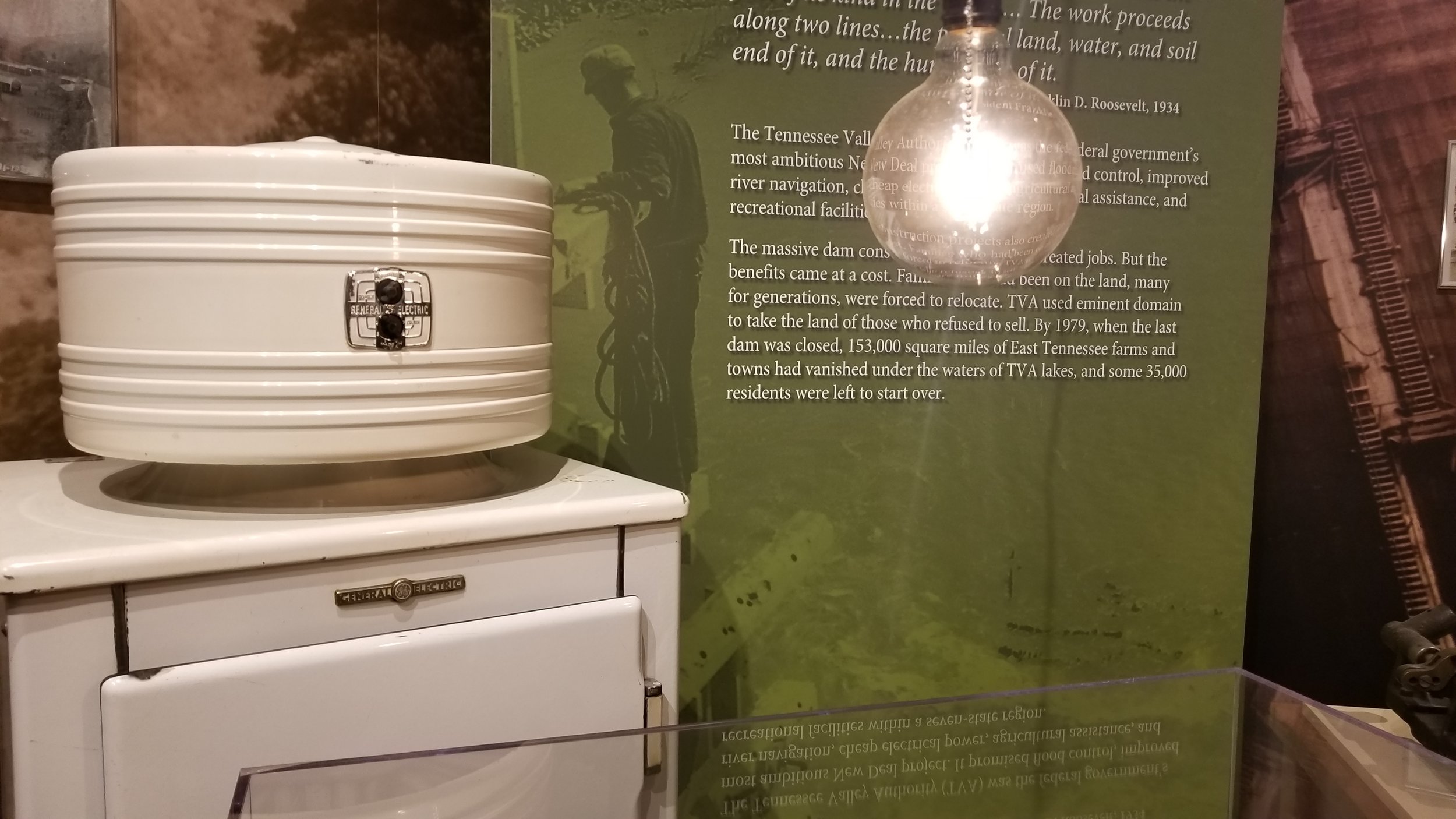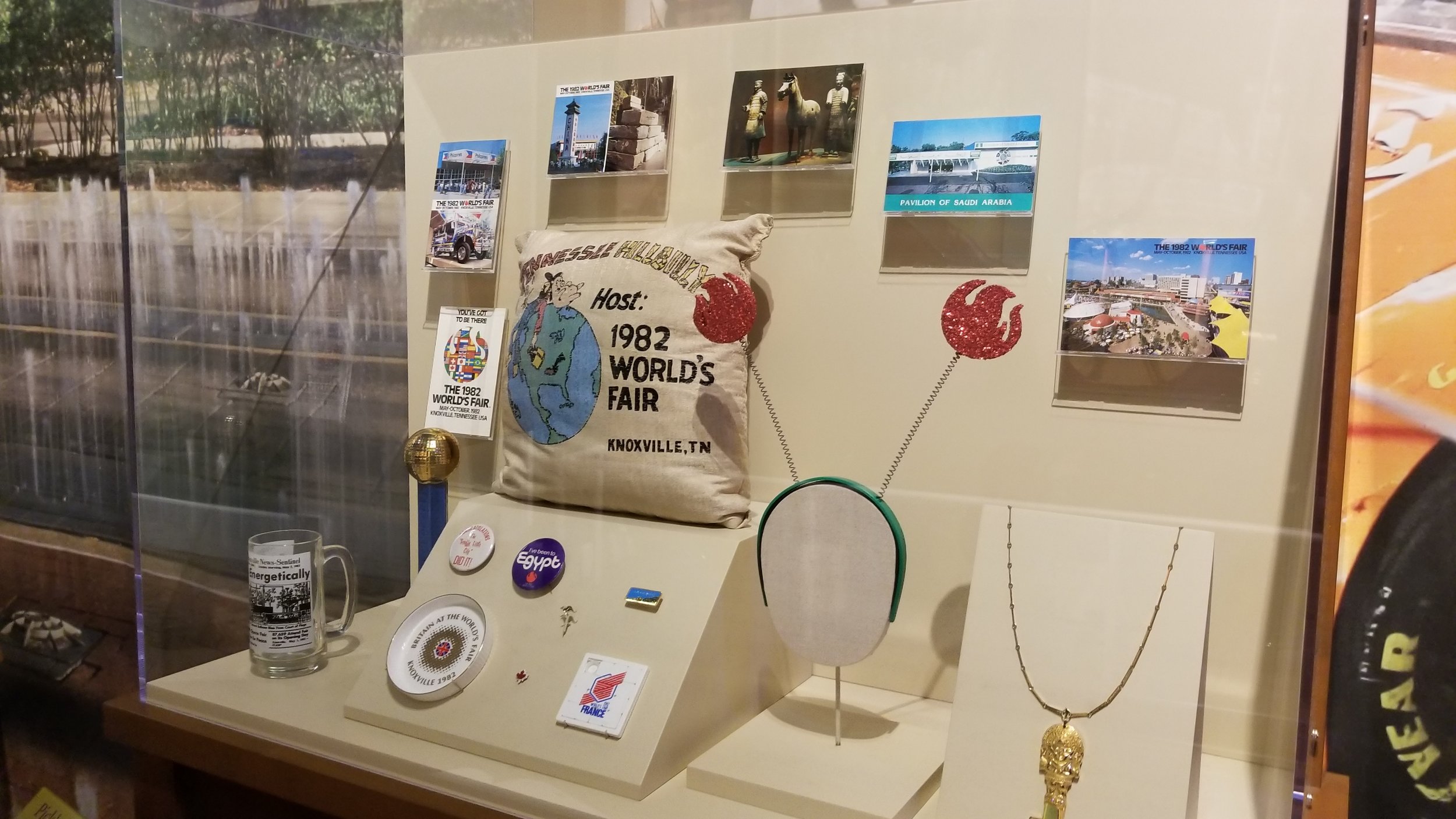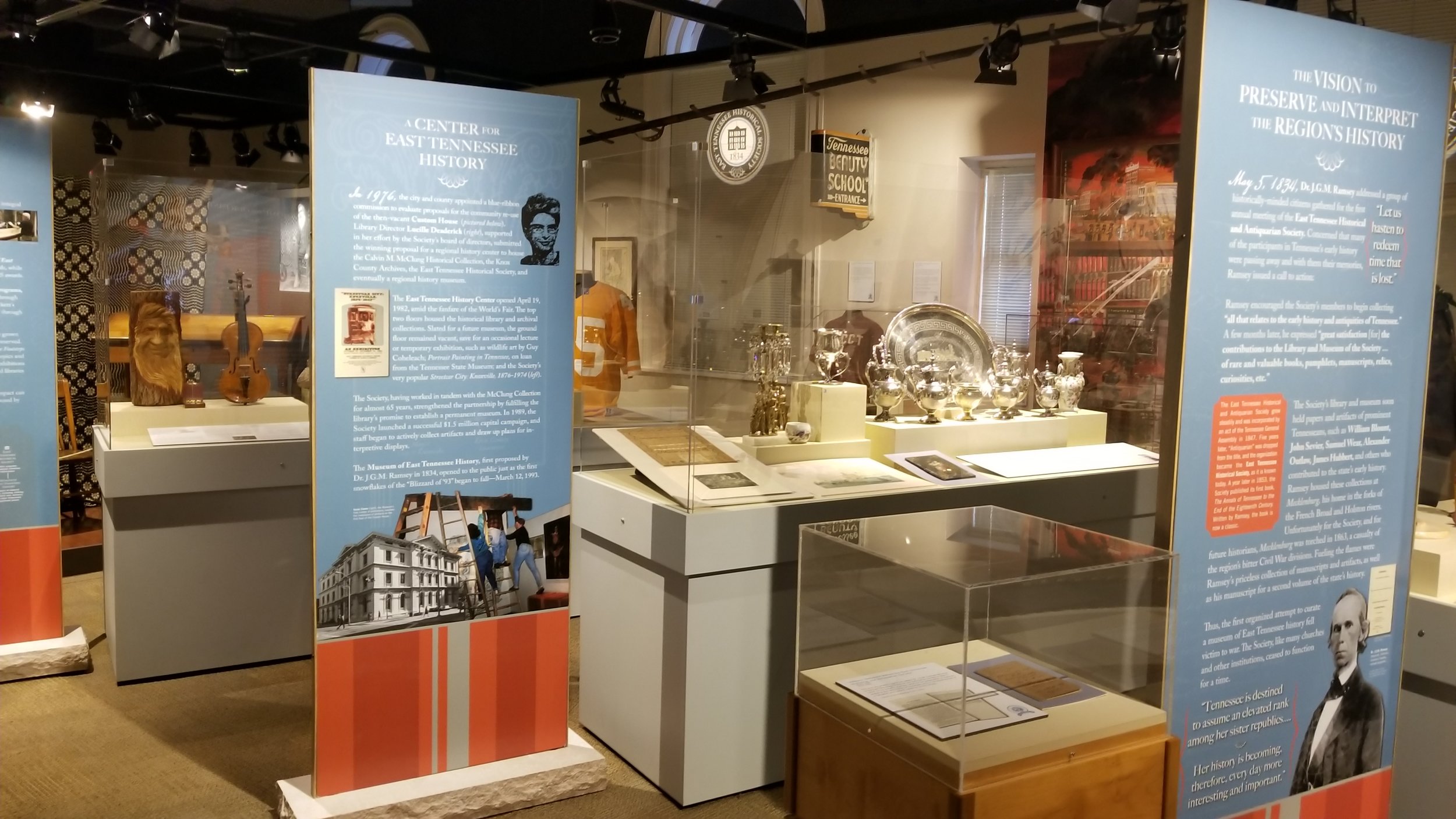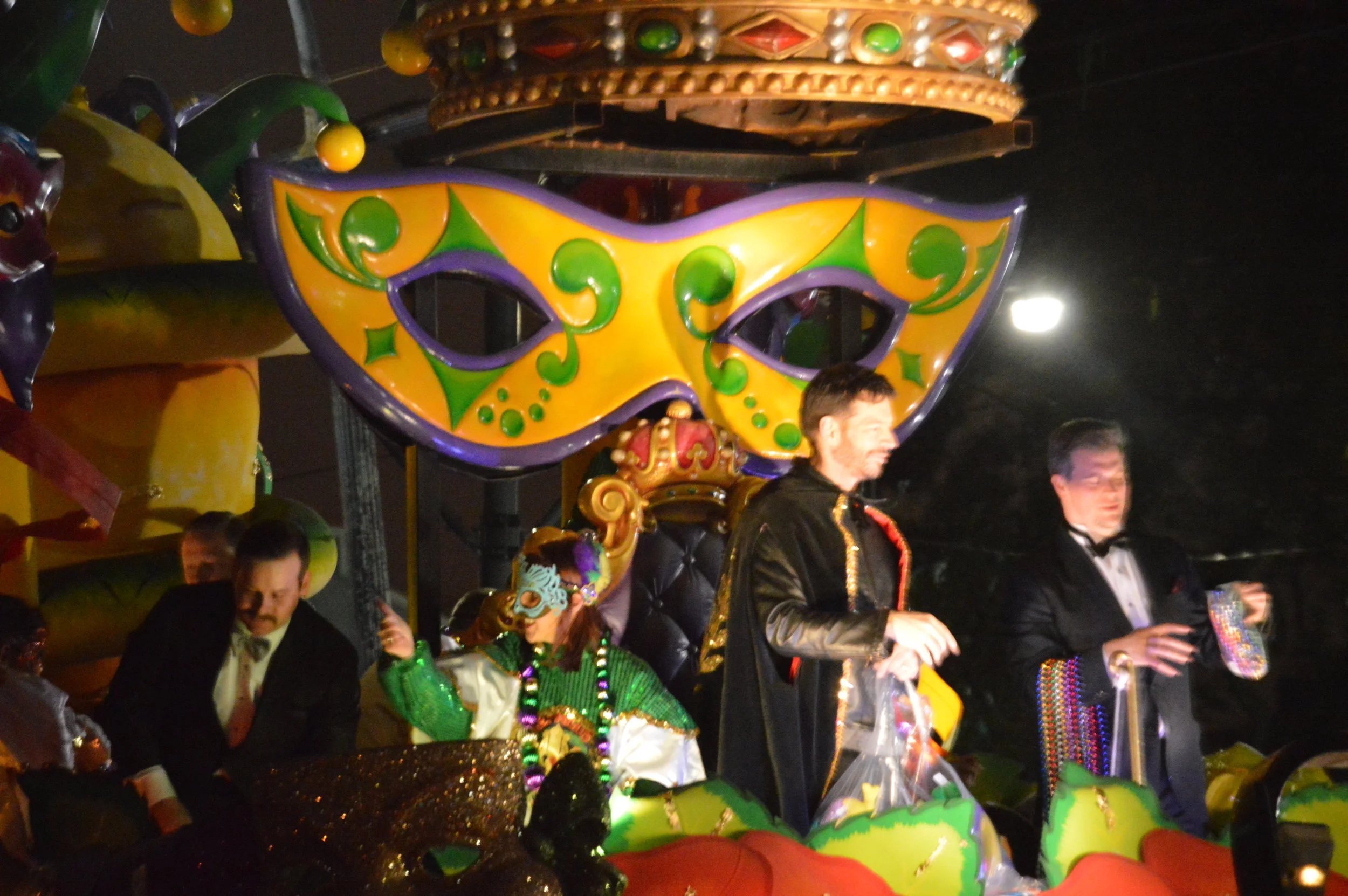At the Center of East Tennessee History
This streetcar from Knoxville is one of the most recognizable “artifacts” at the East Tennessee History Center.
When you walk through parts of Knoxville you might see remnants of the days when streetcars moved people all over the city. Now there’s only one place in Knoxville where you can still walk on to one. Just down the hallway from the front desk of the East Tennessee History Center, sits a bright yellow streetcar. It’s part of a street scene from the early 1900’s complete with a Corner Drug Store, a dentist’s office and wall sized photographs of Downtown Chattanooga and Johnson City.
The Island Home Street Car is the focal point of the room. Its dark wooden doors stand open for passengers (museum guests) to board. Just above the windows on the inside, advertising from a bygone era line the car, ones touting Knoxville institutions like Miller’s Department Store and Regas Restaurant.
Just past the streetcar you’ll find the main exhibit hall and another room for special exhibits. One of the first parts of the main exhibit hall features the early days of European settlement in East Tennessee and the many struggles over who would ultimately control the land.
Did you know that before Tennessee came to be, that the eastern part of the state functioned as its own state for four years? It was called Franklin and both the “key” to the state and the story of its rise and demise are on display at the museum.
The Longhunters played an important role in the early settlement of the area that eventually became East Tennessee.
Tennessee became the 16th state in the Union on June 1, 1796. As the state grew, so did the quest for land, a battle that would come to a head during the Presidency of Andrew Jackson, a favored son of the Volunteer State. The East Tennessee History Center showcases both the major accomplishments of the Cherokee people and the decision to forcibly remove them from the region along the Trail of Tears.
The Civil War exhibit at the East Tennessee History Center.
It would be difficult to tell the story of Tennessee without talking about the Civil War. A map outlining how each county voted on the issue of secession illustrates just how divided the state was over the issue. West and Middle Tennessee overwhelmingly voted to secede, but the Republican stronghold of East Tennessee sided with the Union. Stories of men like Alfred Greene of Hancock County show just how far some would go to keep from being drafted into a cause they did not believe in. Another exhibit focuses on the Bridge Burners, a group under the direction of President Lincoln to destroy bridges in East Tennessee to cut off Confederate supply lines.
Past the Civil War, signs from old railroad stops, a moonshine still and a giant can of marshmallows are easy to spot in a part of the museum focused on the state’s embrace of the “New South,” one where industry played a vital role. Knoxville even hosted a grand exhibition in 1910 to help the world learn about the many advancements in commerce and industry spreading throughout East Tennessee and the rest of the South.
When it comes to the music world, the Big Bang is much more than a theory it’s an event in Bristol that ushered in an era where recorded music became a staple in homes across the country and around the world. The Bristol Sessions of 1927 and 1928 are highlighted at the start of a section focused entirely on the Tennessee Sound. Learn more about Chet Atkins, Roy Acuff, Tennessee Ernie Ford and perhaps the most famous singer from Tennessee, Dolly Parton.
Music from Tennessee isn’t the only thing to leave a mark on the world. Just past Dolly Parton’s dress you’ll find the story of a new deal program that fueled a dramatic change in the 8-states of the Tennessee Valley; a look behind the gates of Tennessee’s Secret City and the role it played in ushering in the Atomic Age’ and a story I love to hear of a courageous group of 12 African-American students who walked down a hill and changed history.
These are just a few of the ways the East Tennessee History Center tells the story of the state, but there is plenty more to see. There are thousands of items in the museum’s collection and for the 25th anniversary of the museum in 2019, an entire room of ones never on display have been put out to view.
Besides having a great location between Gay Street and Market Square, one of the best things about the museum is the price of admission. It’s only $5 for adults, $4 for seniors and FREE to children 16 and under. Sundays are FREE for everyone.
For more information check out easttnhistory.org .







